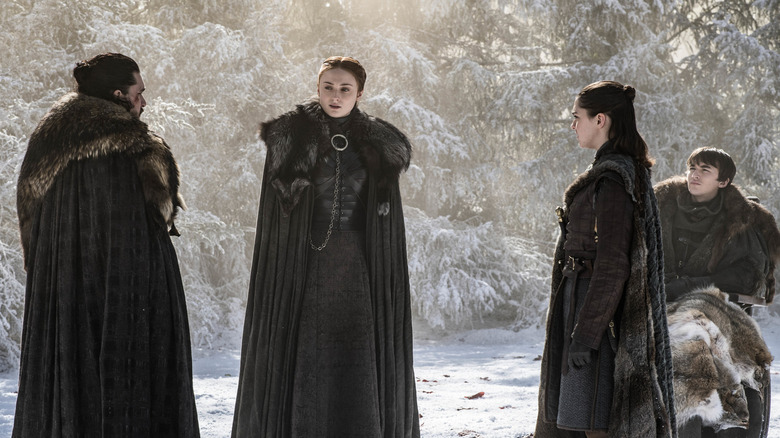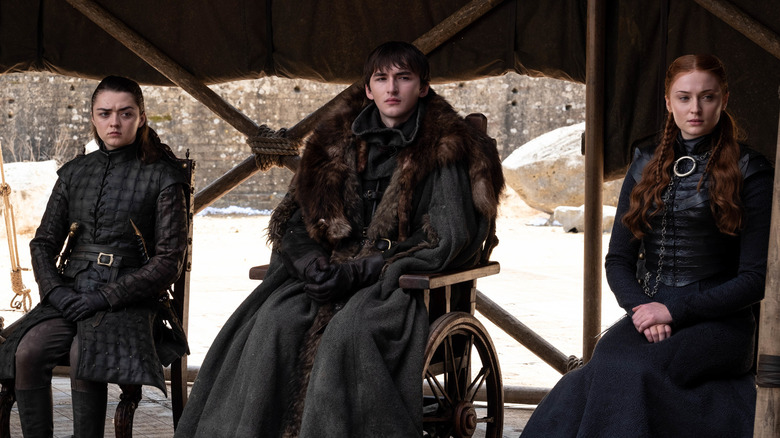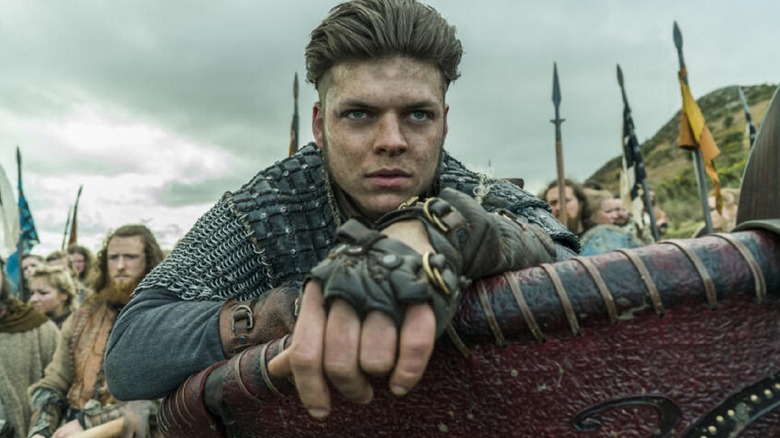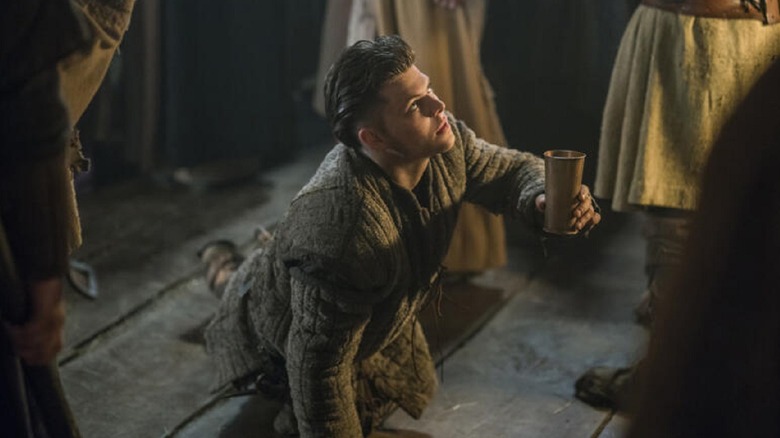The Vikings Character Fans Can't Stop Comparing To A Major Game Of Thrones Player
It is almost a certainty that a fan of HBO's "Game of Thrones" will likely have enjoyed History Channel's "Vikings" as well, or vice versa. Although the former includes fantastical elements like awesome fire-breathing dragons, the two series, which aired almost concurrently, are nevertheless comparable due to their genres, themes, and even writing. So, naturally, some viewers share a love of both TV shows and are capable of drawing parallels between them.
In terms of characters, there are two in particular, one from "Game of Thrones" and another from "Vikings" that can be compared and contrasted because, even though both faced a similar everyday obstacle, what these two characters did in spite of it — or because of it — differs greatly. Writing about the subject of disability, both physical as well as mental, requires the utmost sensitivity and extensive research. One of the most important things to take into account is to not fall into the trap of making said disability the only thing that the audience sees when looking at a character. Disability, no matter its influence on the life of an individual, is never a person's most defining trait: It's one characteristic among the hundreds of traits a complex human being possesses, and the writing should reflect that.
In that regard, the writing of these two characters in question differed enormously, especially in how each developed in the latter seasons. One became a one-dimensional character who did not make the best use of all the skills at his disposal, the other was a terrifying force of nature who did not need any supernatural skills to strike fear into the hearts of his enemies –- and sometimes his own family. Have you guessed to whom we are referring?
The writing of Ivar the Boneless vs Bran the Broken
Of course, we are referring to none other than Ivar "The Boneless" Ragnarsson, portrayed fearsomely by Danish actor Alex Høgh Andersen, and Bran "The Broken" Stark, played for nearly a decade by Isaac Hempstead Wright. Both characters were representative of a person with a physical disability, one Ivar was born with, and one Bran acquired after being pushed out a window of a tower by Jamie Lannister (Nikolaj Coster Waldau) in the very first episode of the action-adventure fantasy series. But other than that, the two are starkly different in how both characters' writing progressed.
A user who goes by u/Deymon1 made a post that includes that well-known Drake meme which surfaced a couple of years back of the singer pointing to something he likes and cringing away from something he dislikes, in this case, to Ivar and from Bran. "Ivar doesn't let his disability limit him. Bran Stark can learn a lot from him" The Reddit user wrote.
In truth, the ones who should learn are the writers, who were responsible for progressively stripping Bran of his multidimensionality (which he initially possessed, in earlier seasons) and devolving him into a static bystander.
Everything Bran can do, Ivar can do better
Granted, Ivar cannot glimpse into the past or the future and is, like all mortals, reduced to only living in the present. However, he makes the absolute best out of that present. Unlike Bran, who could have used his Three-Eyed Raven abilities far more often and far more intelligently than he did, Ivar always made the best use of the resources he had at his disposal.
The still frame of each character that is used in the meme also highlights how Bran and Ivar are almost polar opposites in terms of their personalities. In the picture, the son of Ned Stark (Sean Bean) is wearing that expressionless visage that we came to associate with the character in the latter seasons. Whereas the picture of Ivar corresponds to that infamous scene in Season 5 Episode 3 wherein Ragnar's crippled son, after being knocked out of his carriage in the heat of battle, with a face freshly bloodied, defiantly yells at the approaching Saxon soldiers in Old Norse: "Vet du ikke hvem eg er!? Du kan ikke drepe meg! Vet du ikke hvem eg er!? Eg er Ivar The Boneless!" which translates in English to "Don't you know who I am!? You can't kill me! Don't you know who I am?! I am Ivar the Boneless!" If there were any doubts in the audience's mind that Ivar was a force to be reckoned with, this scene solidified that belief.
Stark differences in writing
Unfortunately, most fans would agree that the last few seasons of "Game of Thrones" did a disservice to Bran's character in spite of the position where he ended up by the show's end. At some point in the early seasons, the young Stark is shown riding a horse with the help of an apparatus whose blueprints Tyrion Lannister (Peter Dinklage) kindly offered him. After an initial despondency at the unalterable results of his tragic injury, Bran becomes determined to not let his difficulty in mobility render him a passive observer.
The same cannot be said of Bran in Season 8, whom many fans thought proved disappointing in the much-touted battle against the White Walkers (per Mashable).
On the other hand, Ivar and his fierce personality always seemed to be much larger than his disability, as it did not make him seem any more inoffensive, on the contrary. Even if he was the one crawling on the floor and having to look up at others, no one dared to look down on him –- at least not for long. Bran did not need to be a violent warrior and a natural-born strategist like Ivar, but it certainly would have been interesting to see a more nuanced, dynamic and active version of the Stark boy. In this sense, Ivar is the best example of the two on how to write disability not as some sort of defect, but as one characteristic among many that can be overcome or wielded to its full potential by force of will and character.



